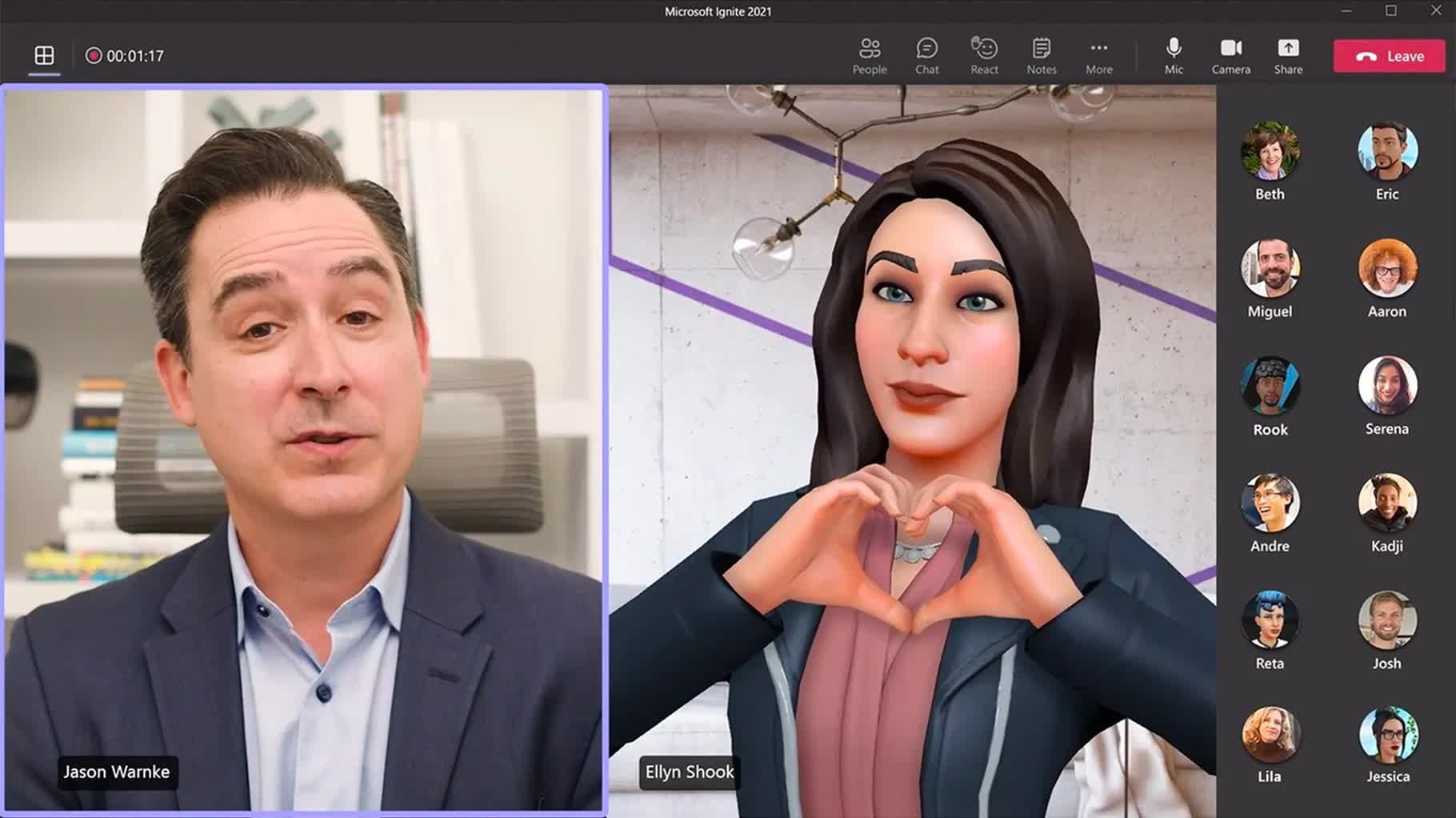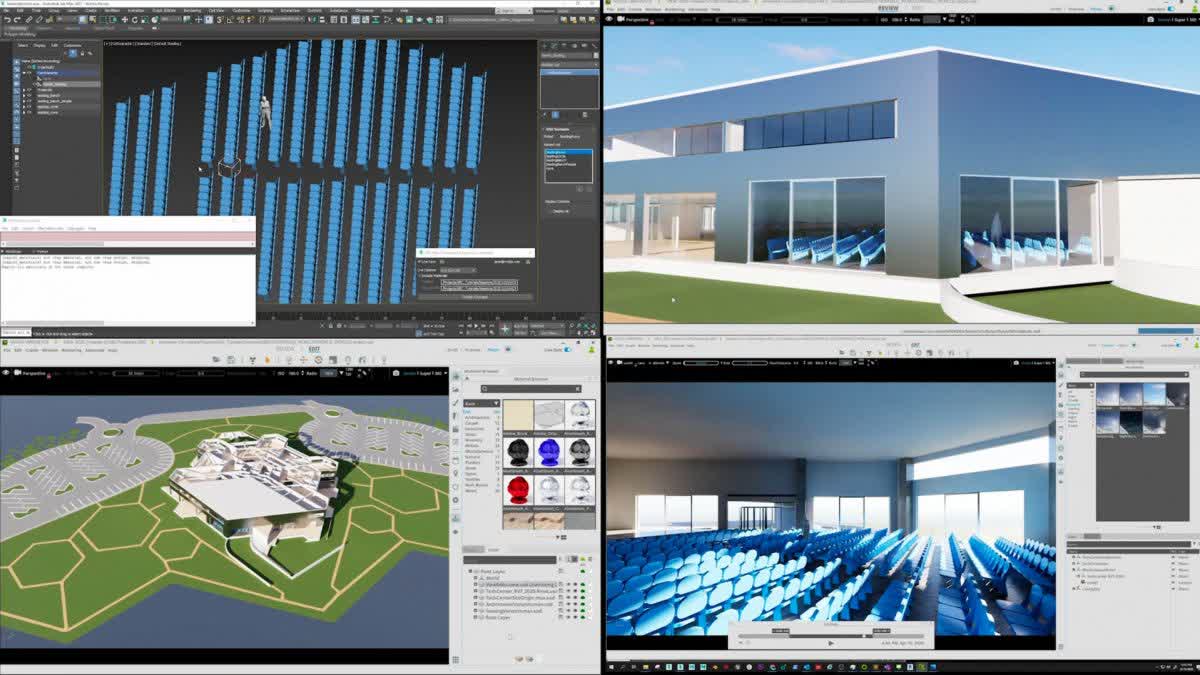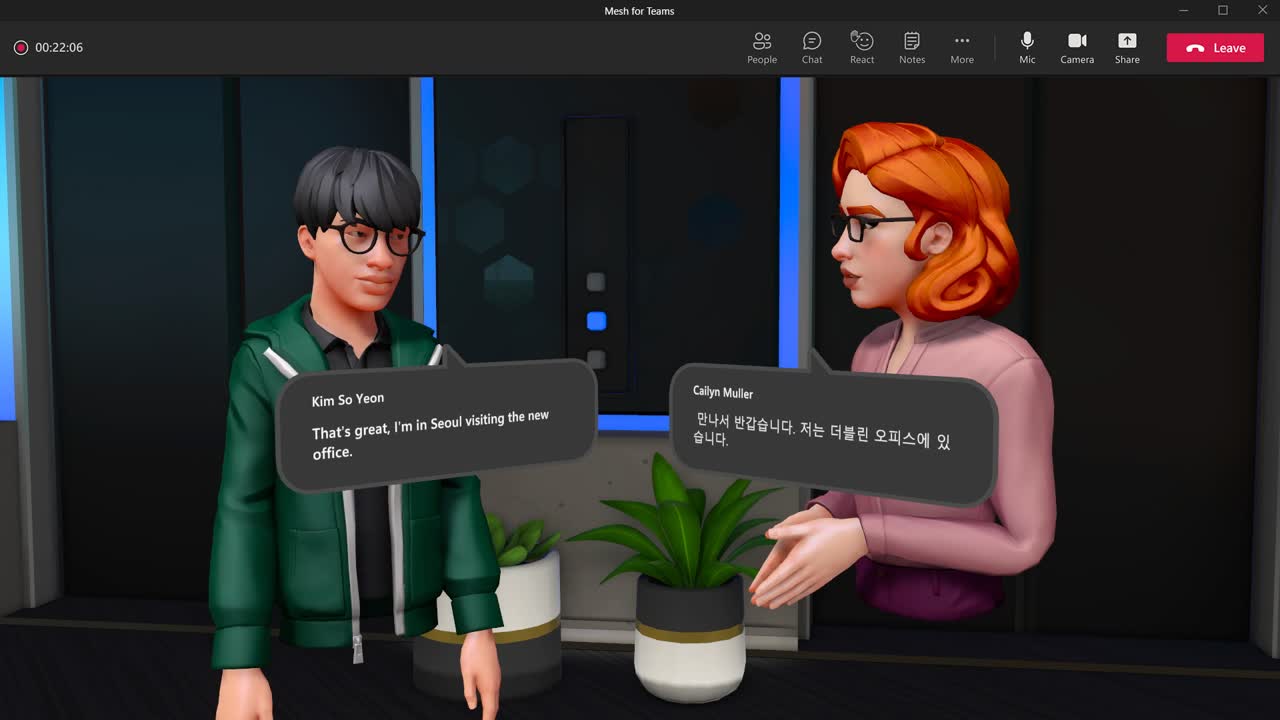In context: Given all the hoopla surrounding the company previously known as Facebook rebranding itself to Meta last week, it's not the least bit surprising to see other big tech industry players start talking about their own visions of what the latest versions of virtual reality (VR) and augmented reality (AR)---the metaverse---can bring. What is somewhat unexpected, however, is how different the perspectives on the topic are already proving to be.
At Microsoft's Ignite conference this week and as part of a news build-up towards next week's Nvidia GTC conference, both companies showed a more practical and business-oriented approach to the metaverse than the consumer-focused version that Mark Zuckerberg and team presented.
While the Meta version of the metaverse focused on things like being able to take the digital skins purchased in one game environment into another, both Microsoft and Nvidia focused on team collaboration and business-to-business communication.
There are many other dissimilarities between the different metaverse perspectives. These differences speak to the intent of the different organizations, the means by which they intend to go to market, and more. Microsoft, for example, will be integrating its AR Mesh technology into Teams, providing a different "view" into the Teams environment for all Teams users.

The cartoon-like avatars provide participants a way to still offer non-verbal communication cues like facial expressions, gestures, and more without needing to be on camera all the time. Of course, it remains to be seen whether or not that will actually relieve the "always on" stress associated with excessive video calls...
The Mesh and Teams integration also extends into activities like shared whiteboarding across different physical locations and other forms of interaction that are designed to make participants feel more like they're in the same physical environment. Given the expected resilience of hybrid working models---even after employees start returning to work in larger numbers---it's easy to imagine how some of these capabilities can provide a practical benefit.
In the case of Nvidia, the company has been talking about its Omniverse platform for several years now, where it means to provide a highly graphical 3D environment designed for engineering, graphics creation and collaboration.
Omniverse Enterprise is designed to collaboratively build graphically realistic simulations of real-world devices and systems, making it useful for everything from designing the latest cars to seeing how AI-powered versions of those cars would function in simulated environments. In fact, Omniverse provides the underpinnings for Nvidia's Drive Sim efforts on autonomous driving, as well as its Isaac Sim robotics simulation platform.
Omniverse Create is the tool that leverages the company's RTX graphics technology to create advanced scene compositions and virtual worlds with photo-realistic detail and then share them via the Pixar USD format. (Ironically, while we'll never know for sure, it could even be that Meta used Omniverse Create to help build its fantastical metaverse "worlds".)
One of the other interesting aspects of Nvidia's approach is its focus on partnerships. As Microsoft is doing with Teams, Nvidia continues to emphasize Omniverse as an extensible platform that other software companies and developers can leverage, including big-name graphics ISVs like Adobe, Autodesk, and more. In addition, Nvidia is focused on working with a variety of hardware partners to help deliver the systems that can power its Omniverse vision. The company is also working with resale partners to bring the 3D graphics collaboration capabilities to enterprises.

All of which highlights yet another critical difference between the Meta, Microsoft, and Nvidia offerings: the expected scope of the efforts. Even though Zuckerberg and other Meta leaders acknowledged many times over that most of the innovations needed to achieve the vision of extraordinarily impressive graphics in its metaverse are several years off, they also implied that it would be a mainstream option for all. In a sense, it was like a real-world implementation of the Oasis metaverse from the book and movie Ready Player One that essentially anyone who currently uses something like the Facebook app would be expected to regularly use.
Both the Microsoft and Nvidia concepts, on the other hand, seem much more targeted to certain environments in certain businesses. Microsoft's Mesh for Teams is meant to work for most types of business meetings in theory, but the fact that it requires dedicated AR/VR headsets (at least to power the avatars) will limit its usage. Nvidia's offering is even more specialized, as it's designed for the engineers, designers, and other creative professionals who are involved with creating 3D models and virtual worlds. It's an important group to be sure, but not a huge one.
Despite more limited scopes, realistically they're also more practical than the Meta approach, not only from a numbers perspective, but an acceptance factor as well. While I certainly expect there to be significant generational differences in preference, I still believe it is fair to say that most people don't really want to spend significant amounts of time in a Ready Player One type metaverse---especially given the state of today's VR and AR hardware.
While movie-like CGI graphics and fantasy-like environments are certainly visually compelling to watch, they aren't something most people want to view all the time. Plus, let's not forget what's involved with making those kinds of visuals. Have you ever seen what actors working on science-fiction and other graphics-intensive movies have to go through to get their scenes done? Surrounding yourself with green screens isn't an experience most people are going to want to do more than a few times and I certainly don't see how it's going to translate to home or even most office environments. Using such a setup multiple times a day doesn't seem practical in the least.
... we need to think through the privacy implications of technologies that ultimately may be able to track all the environments we live, work, and play in, all the people we interact with, and all the things we do. That's a lot to ponder.
Finally, we need to think through the privacy implications of technologies that ultimately may be able to track all the environments we live, work, and play in, all the people we interact with, and all the things we do. That's a lot to ponder.
Part of this challenge has to do with the limitations of today's hardware---a challenge that will eventually go away. But even when these constraints are removed, there's still something very isolating about purely virtual interactions. Nearly two years into pandemic-driven changes to our work environments, most of us are feeling the effects of this, despite higher quality cameras and nearly non-stop video-based interactions. People like to interact with real people, in real time, in real life, and we're a very long way from any technology replacing that experience.
In fact, I can't help but note the irony of the timing for all these announcements. By the time most of these offerings become available next year, many people will likely be returning to the office on at least a semi-regular basis. As a result, the perceived need for these new types of interactions may not be as compelling as it currently is.
To be clear, meeting-based interactions and collaboration efforts with remote colleagues (across the world or just down the street) will continue to be critical. As a result, even though they're probably the least sexy of these new technologies, collaboration-driven developments will surely be ongoing and the most impactful---certainly within next five years.
That's why, at the end of the day, while it's definitely cool to think about the interesting possibilities that technologies and concepts like metaverses might enable, practical benefits are what's likely to ultimately find success.
Bob O'Donnell is the founder and chief analyst of TECHnalysis Research, LLC a technology consulting firm that provides strategic consulting and market research services to the technology industry and professional financial community. You can follow him on Twitter @bobodtech.
